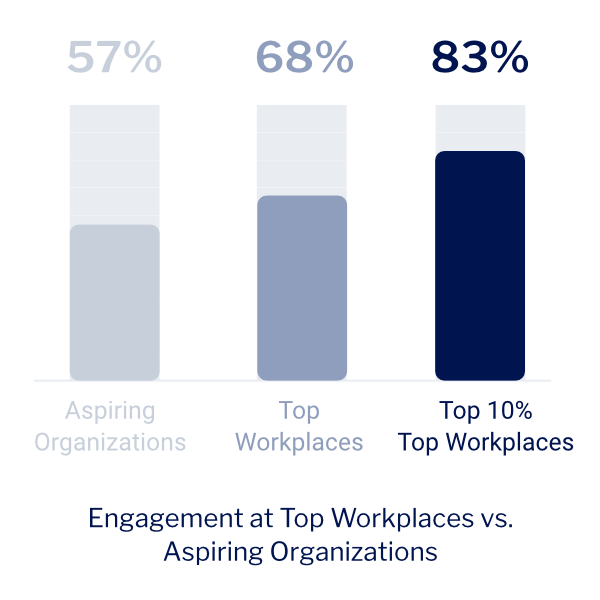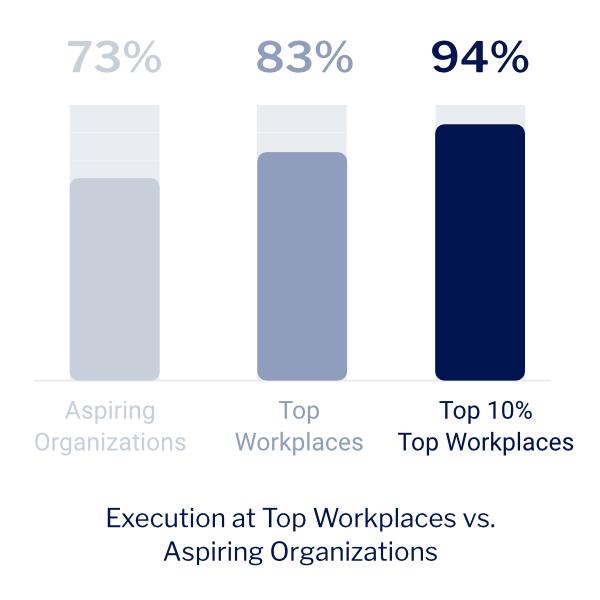Productivity is a measure of economic performance that reflects output compared to inputs. Workplace productivity reflects the goods and services versus the labor and costs. For companies, productivity can be best described as the amount of work that can be executed over a specific period.
Work productivity indicates how well employees work to support key business goals and overall performance. It reveals much about an organization, including how employee morale impacts profitability.
Why is productivity important in business
Individual productivity and business performance rely on employee engagement and organizational efficiency. Businesses will only see improvements in their output when inputs are improved or increased.
The U.S. business sector is an excellent example of the importance of productivity. Companies in this sector produce nine times more goods and services now than they did 75 years ago, all with only a relatively small increase in total hours worked per person.
Surveying individual, team, and overall workplace productivity is important because it reveals cracks in organizational culture and how to fix them. It’s a great way to efficiently start producing more goods and services for the same amount of work.
Benefits of improving productivity for businesses
An essential advantage of improved productivity is increased profitability. With that comes competitiveness and improvements in recruitment. Productivity growth also boosts employee motivation, satisfaction, and overall career growth. Companies with high levels of workplace productivity also:
Effects of low productivity
Low productivity, the root cause of many organizational problems, is detrimental to business growth and performance. It’s a costly problem, too, so businesses must understand how to recognize the signs as soon as they start. The effects of productivity challenges include:
- Decreased profitability
- Low team morale
- Employee disengagement
- Unutilized resources
- Lack of motivation, creativity, and innovation
- Slow project timelines
- High burnout and employee turnover
- Low customer satisfaction
Productivity vs. efficiency
Efficiency and productivity are similar concepts but not the same. Work efficiency refers to how well a business uses its resources, while work productivity refers to the quantity of work completed — productivity increases when resources, including employees, are used efficiently.
As mentioned earlier, productivity is measured by comparing business input to business output. Workplace efficiency measures the quality of input that goes into that equation, meaning that it has a significant impact on increasing productivity.
How to improve productivity in the workplace
There are many different strategies to improve productivity in the workplace. Every business will need a different approach, depending on its culture, employees, goals, procedures, and structure. Strategies for improving productivity in the workplace include:
- Create a comfortable culture focused on a positive employee experience.
- Develop productivity metrics and educate employees on their importance.
- Increase focus by eliminating unnecessary distractions.
- Enable effective communications between individuals, teams, managers, and leaders.
- Encourage a balance between mental breaks and productivity.
- Focus on well-being to prevent burnout in employees.
- Remove unproductive or unnecessary meetings.
- Recognize and appreciate productive employees.
Read More: 9 Employee Recognition Award Ideas
Measuring and monitoring workplace productivity
Still curious “What is work productivity?” Technically, productivity is measured by dividing total workplace output by total workplace input. The more output increases, the higher productivity becomes. Productivity is measured at many different levels, including:
- Individual
- Team
- Company
- Industry
Measuring and monitoring workplace productivity can be challenging for companies that provide “knowledge work” instead of a tangible good. There are many ways to measure workplace productivity, such as:
- Customer satisfaction
- Employee motivation
- Growth and development
- Labor utilization rate
- Overtime
- Project execution
- Revenue and profit
Common challenges of productivity improvements
There are always opportunities to improve productivity, even at the most productive companies. Common productivity challenges include:
- Thinking the most efficient way is always the most productive
- Failing to document efficient processes
- Redundant processes and duplication
- Bottlenecks and inefficient handoffs
- Employee burnout
Businesses often dismiss these as minor challenges when contributing significantly to productivity, performance, and profitability. Maximizing productivity means removing these roadblocks in the employee experience and improving systems that cause additional challenges.
Who is responsible for improving productivity
While everyone contributes to workplace productivity, operations departments and leadership teams have direct responsibility. Smaller businesses without a dedicated operations team rely on great managers and leadership teams for productivity improvements. Being more involved in the day-to-day operations is an excellent opportunity for leadership to take an active role in the decision-making and solution-finding processes.
How employee engagement affects productivity
Employee engagement directly impacts work productivity, whether good or bad. Top Workplaces defines employee engagement as “a positive psychological state where an employee feels an emotional commitment to the organization and its goals.” When companies have higher employee engagement, they have better performance, happier employees — and greater productivity.
On average, award-winning Top Workplaces achieve double the engagement levels of average organizations as determined by the Workplace Survey:

The same survey measures work productivity with its Execution statement:
“At this company, we do things efficiently and well.”

Top Workplaces — and companies that aspire to be — excel at driving productivity. While 73 percent of employees at aspiring organizations responded positively to the Execution statement on the Workplace Survey, the number jumps to 83-94 percent at Top Workplaces.
How employee engagement surveys can increase productivity
Employee engagement surveys are an effective way to capture valuable insights into workplace productivity. Candid employee feedback can teach an organization a lot about its strengths and opportunities for improvement.
Read More: Improve Employee Survey Insights With Top Workplaces
Get started with the Top Workplaces employee engagement survey
Based on employee feedback captured by a research-backed employee engagement survey, Top Workplaces awards celebrate organizations that believe in the power of a people-first culture. The employer recognition program helps companies to stand out in a competitive market, attract new talent, and boost employee morale.
Does your company excel at productivity? Get recognized for it! Nominate your organization for Top Workplaces, the employer recognition program that offers awards in 60+ regional markets and national awards for culture and industry excellence.

